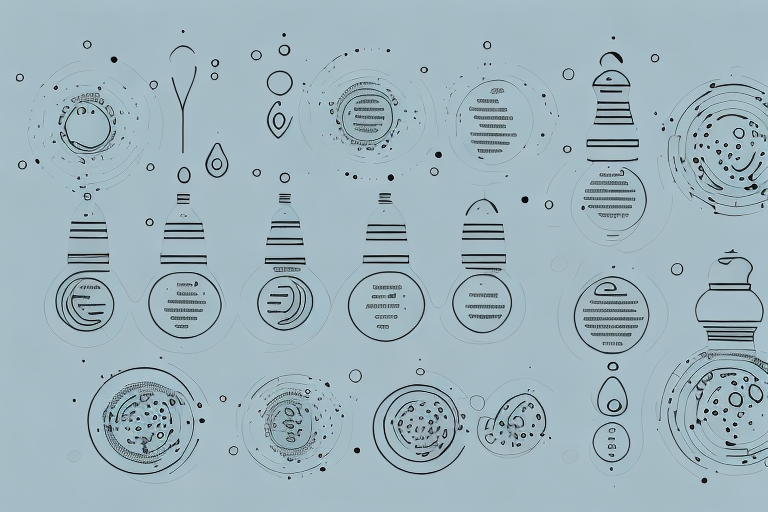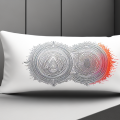Cupping therapy has been around for centuries, but it has recently gained popularity as an alternative form of physical therapy. It involves using suction cups on the skin to create a vacuum effect, which can help with pain relief, muscle tension, and myofascial release. In this article, we will explore the benefits of using a cupping set for physical therapy, including its history, different types of cupping sets, how it can be combined with other forms of PT for optimal results, and precautions you should take when using it.
What is Cupping Therapy and How Does it Work?
Cupping therapy is a form of alternative medicine that involves placing cups on the skin to create a vacuum effect. The suction created by the cups promotes blood flow to the area, which can help with pain relief and muscle tension. It is believed that cupping therapy works by stimulating the body’s natural healing processes and can help to reduce inflammation and improve circulation.
In addition to its physical benefits, cupping therapy has also been found to have a positive impact on mental health. Many people report feeling relaxed and less stressed after a cupping session. This may be due to the release of endorphins, which are natural painkillers produced by the body. Cupping therapy has also been used to treat respiratory conditions, such as asthma and bronchitis, as well as digestive issues and skin problems. While cupping therapy is generally considered safe, it is important to consult with a qualified practitioner before trying it, especially if you have any underlying health conditions.
History of Cupping Therapy and Its Use in Physical Therapy
Cupping therapy has been used for thousands of years in traditional Chinese medicine to treat a variety of ailments, including respiratory disorders, digestive issues, and chronic pain. In recent years, it has gained popularity as an alternative form of physical therapy due to its ability to help with rehabilitation and pain management. It is often used in conjunction with other forms of PT, such as massage and stretching, to help alleviate pain and improve mobility.
One of the main benefits of cupping therapy is its ability to increase blood flow and circulation to the affected area. This can help to reduce inflammation and promote healing. Cupping therapy can also help to release tension in the muscles and fascia, which can improve range of motion and flexibility. Additionally, cupping therapy has been shown to have a positive effect on the nervous system, helping to reduce stress and promote relaxation.
Different Types of Cupping Sets and How to Select the Right One for Your Needs
There are several different types of cupping sets available, including silicone, glass, and plastic. Each type of set has its own benefits and drawbacks, and the type of set you choose will depend on your specific needs and preferences. For example, silicone cupping sets are more flexible and can be used on a larger area of the body, while glass sets are more rigid and provide a stronger suction effect. It is important to choose a cupping set that is safe to use and made of high-quality materials.
When selecting a cupping set, it is also important to consider the size and shape of the cups. Some sets come with cups of varying sizes, which can be useful for targeting different areas of the body. Additionally, some sets may include specialized cups, such as facial cups or cellulite cups, which are designed for specific purposes. It is important to choose a set that includes cups that are appropriate for your intended use.
How Cupping Therapy Can Help with Pain Relief and Muscle Tension
Cupping therapy can be an effective form of pain relief for those who suffer from chronic pain or muscle tension. It works by stimulating blood flow to the affected area, which can help to reduce inflammation and improve mobility. Cupping therapy can also help to release tension in the muscles and reduce the appearance of cellulite. It is a safe and non-invasive form of physical therapy that can be used in conjunction with other forms of treatment for optimal results.
Using a Cupping Set for Myofascial Release and Improved Range of Motion
Cupping therapy can also be used for myofascial release and improved range of motion. When used in conjunction with stretching and massage, it can help to release tension in the muscles and improve mobility. Cupping therapy is often used on the back, neck, and shoulders to help alleviate tension and improve posture. It is a safe and effective way to improve your overall physical health and well-being.
Combining Cupping Therapy with Other Forms of Physical Therapy for Optimal Results
Cupping therapy can be used in conjunction with other forms of physical therapy, such as massage, stretching, and exercise, to help improve your overall physical health and well-being. It can be used to alleviate pain and improve mobility, as well as help with rehabilitation after an injury or surgery. Cupping therapy can be customized to meet your specific needs and can be used as part of a comprehensive treatment plan.
Precautions and Contraindications for Using a Cupping Set in Physical Therapy
While cupping therapy is generally considered safe, there are certain precautions you should take when using a cupping set in physical therapy. For example, you should not use cupping therapy on broken or irritated skin, and you should avoid areas that are inflamed or infected. You should also avoid using cupping therapy on areas of the body that are sensitive or painful, such as the face or genitals. It is important to speak with your physical therapist before trying cupping therapy to ensure that it is safe and appropriate for your condition.
Tips for Performing Cupping Therapy Safely and Effectively
If you are new to cupping therapy, it is important to learn how to perform it safely and effectively. Some tips for performing cupping therapy include using high-quality cupping sets, cleaning the skin before and after use, and avoiding prolonged suction times. It is also important to monitor the skin for any signs of irritation or bruising after treatment. By following these tips, you can help ensure that cupping therapy is a safe and effective form of physical therapy for you.
Success Stories from Patients Who Have Experienced the Benefits of Cupping Therapy in Physical Rehabilitation
Many patients have experienced the benefits of cupping therapy in physical rehabilitation. For example, some individuals have reported experiencing reduced pain and improved mobility after using cupping therapy in conjunction with other forms of physical therapy. Other patients have reported feeling more relaxed and less stressed after cupping therapy, which can have a positive impact on their overall health and well-being. While the benefits of cupping therapy may vary from person to person, it is clear that it can be an effective form of physical therapy for many individuals.
Conclusion
Cupping therapy is a safe and effective form of physical therapy that can help with pain relief, muscle tension, myofascial release, and improved mobility. By selecting the right cupping set and following proper safety precautions, you can use cupping therapy in conjunction with other forms of physical therapy for optimal results. If you are considering cupping therapy as a form of PT, it is important to speak with your physical therapist to ensure that it is safe and appropriate for your condition.





